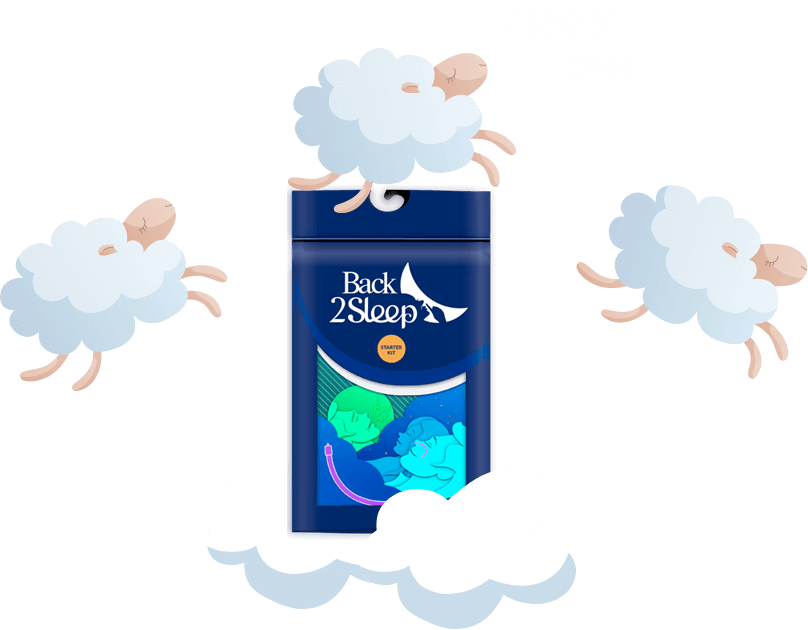What is sleep apnea?
Sleep apnea means the temporary cessation of breathing during sleep. This problem stems from the obstruction of the airways, most often due to the relaxation of the muscles of the tongue and throat. When sleep apnea occurs, the brain goes into alarm and triggers a micro-awakening to resume breathing. This phenomenon is not serious in itself, but can have serious consequences depending on the number of apneas per night. Beyond five apneas of more than ten seconds per hour, the problem becomes pathological. Waking up too often alters the quality of sleep, resulting in severe fatigue during the day, a certain irritability and frequent headaches. The accumulated stress on the heart and brain can also lead to cardiovascular complications. People who are overweight, diabetic or smokers are more likely to be affected by sleep apnea. If affected, individuals tend to strongly snore but snoring is not necessarily synonymous with sleep apnea. Nearly one in two adults snores, but the vast majority do not suffer from apnea.Sleep apnea device for whom?
Sleep apnea is seriously disabling, both for the person concerned and those around them. Sleep apnea devices exist to help you breathe better at night, by delivering continuous positive pressure (CPAP). This mask allows air to be automatically sent into the nose, in order to avoid having the airways obstructed by the tongue or the muscles of the throat. The CPAP device should be used for at least four hours per night. The effectiveness is real on apnea, quickly eliminated. Snoring can also be eliminated, or at least reduced. Deep sleep is regained, and fatigue eliminated. CPAP is the gold standard treatment for sleep apnea. The sales figures continue to increase each year, with now nearly a million French people equipped. The breathing mask is for anyone diagnosed with sleep apnea. Often, sufferers are unaware of it, as the symptoms unfold in their sleep.

The entourage thus plays an important role in raising awareness. Only a doctor can confirm the disorder, after carrying out a type of polygraphic examination . The price of a device for sleep apnea varies around 1,000 euros. Depending on its effectiveness and the number of hours used, it is likely to be partially reimbursed by social security.
The device for sleep apnea in transport
Even if the latest CPAP masks are less bulky (2 to 3 kilos) than the first models, they are not always easy to transport and work with an electrical outlet. For example, a device for sleep apnea in a motorhome most often requires finding a free socket in a stopping area, which is far from always easy. New generations of much easier to use and discreet devices exist to fight against sleep apnea.

The Back2Sleep stent is an effective device for sleep apnea in airplanes, trains and other means of transport. As with a CPAP device, it prevents obstruction of the airways and avoids snoring and sleep apnea. The result of seven years of research, it is a small silicone tube that is soft and supple like the skin, which is inserted into the nose as far as the soft palate. This orthosis ensures the circulation of air in the nose, avoiding breathing through the mouth. Two Back2Sleep models have been designed to fit right and left nostrils. These tubes are available in eight different lengths (133 to 163 mm), depending on the level of tolerance to the device. The larger the Back2Sleep, the better the aeration and the improved efficiency.
Sleep apnea device, best alternatives
Other means than CPAP masks exist to fight against sleep apnea. Acupressure or manual acupuncture is one of the best alternatives, stemming from Chinese medicine. This method aims to identify a series of decisive points on the body, the solicitation of which makes it possible to intervene effectively against sleep apnea. The mandibular advance orthosis (MAO) also of some interest. Similar in appearance to dentures, this orthosis forces the tongue and lower jaw to stay forward, instead of blocking the pharynx. The MAO is made to measure and makes it possible to breathe better, and to eliminate or reduce snoring and sleep apnea. Its price varies from 600 to 900 euros, potentially reimbursed by social security.

Sleep apnea devices are also freely available on the market, without medical prescription, for a few tens of euros. Simple and practical, they make it possible to obtain good results. The OAM and the Back2Sleep stent are particularly suitable for people who cannot tolerate the CPAP mask. They also offer the advantage of being much easier to use, without a power outlet, although less cumbersome and more discreet. They are also much less expensive than the CPAP mask, and are therefore now preferred by health insurance.

- Choosing a selection results in a full page refresh.
- Opens in a new window.







